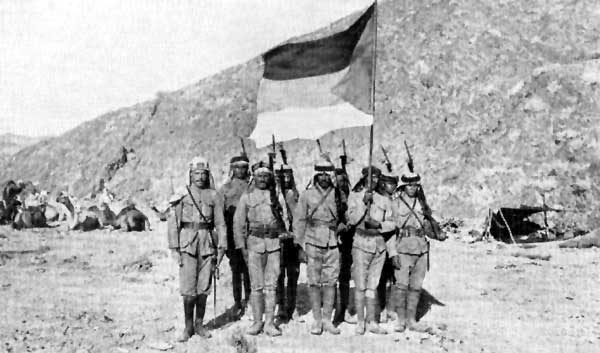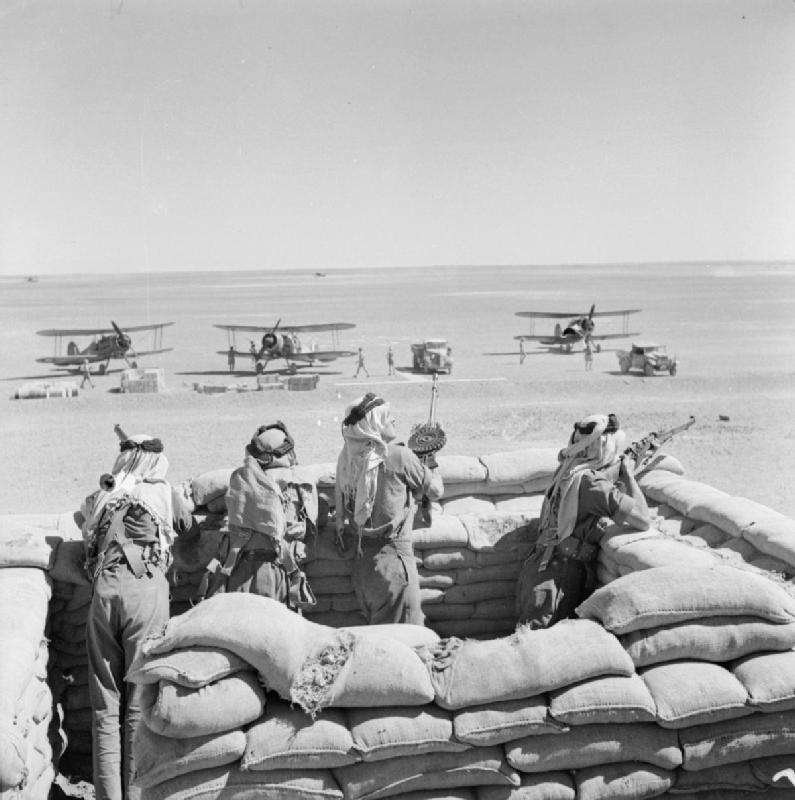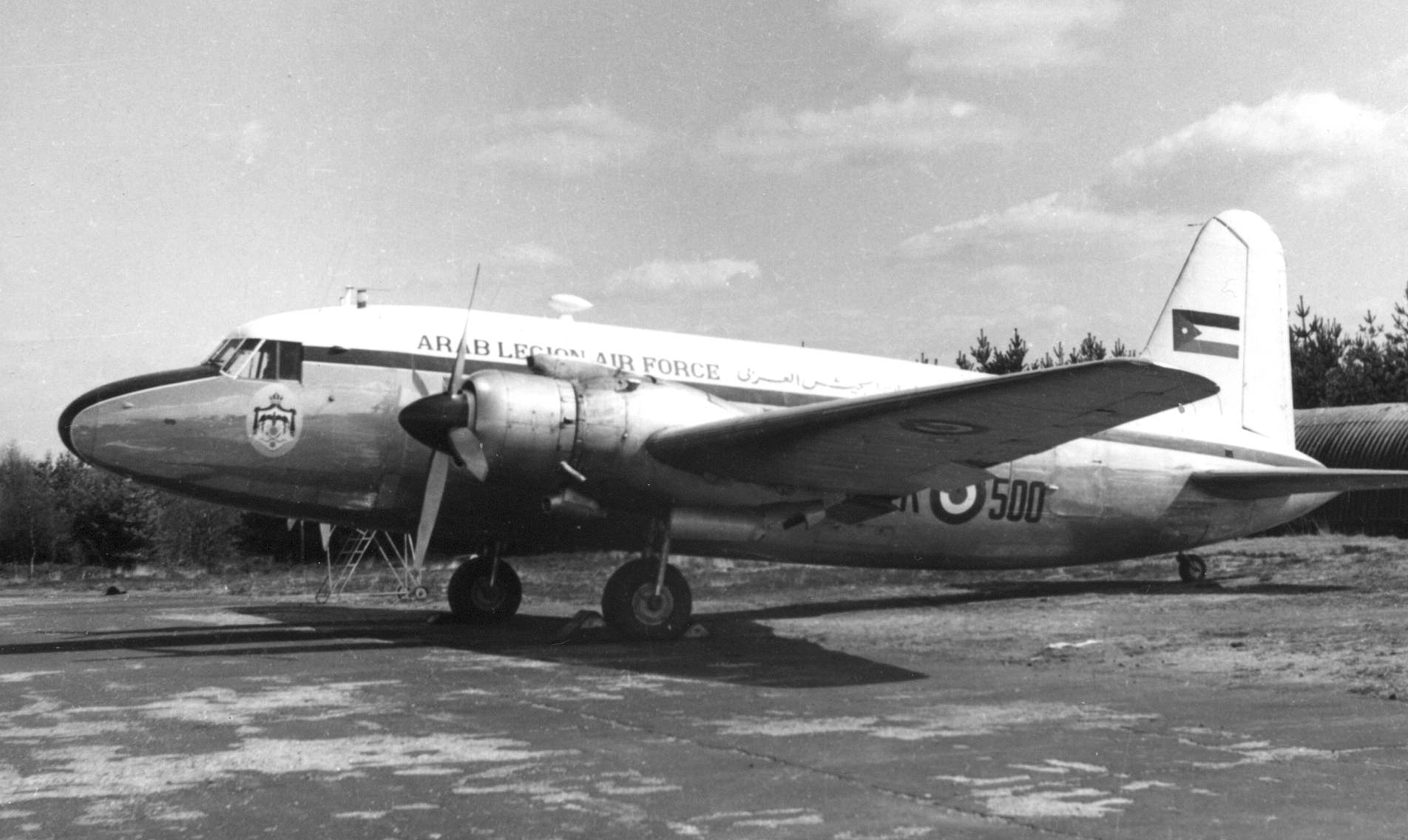Jordanian Legion on:
[Wikipedia]
[Google]
[Amazon]
The Arab Legion () was the police force, then regular army of the Emirate of Transjordan, a British protectorate, in the early part of the 20th century, and then of independent Jordan, with a final Arabization of its command taking place in 1956, when British senior officers were replaced by Jordanian ones.

 It was quickly expanded to 1,000 men, recruiting Arabs who had served in the Ottoman Army. On 22 October 1923, the police were merged with the Reserve Mobile Force, still under Peake, who was now an employee of the Emirate of Transjordan. The new force was named ''Al Jeish al Arabi'' ("the Arab Army") but was always known officially in English as the Arab Legion. The Arab Legion was financed by Britain and commanded by British officers. The Legion was formed as a police force to keep order among the tribes of Transjordan and to guard the important Jerusalem–
It was quickly expanded to 1,000 men, recruiting Arabs who had served in the Ottoman Army. On 22 October 1923, the police were merged with the Reserve Mobile Force, still under Peake, who was now an employee of the Emirate of Transjordan. The new force was named ''Al Jeish al Arabi'' ("the Arab Army") but was always known officially in English as the Arab Legion. The Arab Legion was financed by Britain and commanded by British officers. The Legion was formed as a police force to keep order among the tribes of Transjordan and to guard the important Jerusalem–
 The top three officers representing the Legion who participated in the Victory March were Major General Abdul Qadir Pasha el Jundi, O.B.E., Colonel Bahjat Bey Tabbara, and Lieutenant Colonel Ahmed Sudqui Bey, M.B.E.
The top three officers representing the Legion who participated in the Victory March were Major General Abdul Qadir Pasha el Jundi, O.B.E., Colonel Bahjat Bey Tabbara, and Lieutenant Colonel Ahmed Sudqui Bey, M.B.E.

 The Arab Legion actively participated in the
The Arab Legion actively participated in the
 On September 11, 1956, an Israeli force in what the IDF termed one of its
On September 11, 1956, an Israeli force in what the IDF termed one of its
 * Colonel Frederick Peake ("Peake Pasha") – 22 October 1923 – 21 March 1939
*
* Colonel Frederick Peake ("Peake Pasha") – 22 October 1923 – 21 March 1939
*
Encyclopædia Britannica article
1956 - King of Jordan sacks British general (BBC article and video)
{{Authority control 1948 Arab–Israeli War Arab nationalist militant groups Military history of Jordan Military units and formations of Jordan Military units and formations established in 1920 Military units and formations disestablished in 1956 1956 disestablishments in Jordan Military units and formations of the British Empire in World War II
Creation
In October 1920, after taking over theTransjordan region
Transjordan, the East Bank, or the Transjordanian Highlands ( ar, شرق الأردن), is the part of the Southern Levant east of the Jordan River, mostly contained in present-day Jordan.
The region, known as Transjordan, was controlled by ...
from the Ottomans
The Ottoman Turks ( tr, Osmanlı Türkleri), were the Turkic founding and sociopolitically the most dominant ethnic group of the Ottoman Empire ( 1299/1302–1922).
Reliable information about the early history of Ottoman Turks remains scarce, ...
, the United Kingdom formed a unit of 150 men called the "Mobile Force", under the command of Captain Frederick Gerard Peake, to defend the territory against both internal and external threats. The Mobile Force was based in Zarqa. 80% of its men were drawn from the local Chechen community.

 It was quickly expanded to 1,000 men, recruiting Arabs who had served in the Ottoman Army. On 22 October 1923, the police were merged with the Reserve Mobile Force, still under Peake, who was now an employee of the Emirate of Transjordan. The new force was named ''Al Jeish al Arabi'' ("the Arab Army") but was always known officially in English as the Arab Legion. The Arab Legion was financed by Britain and commanded by British officers. The Legion was formed as a police force to keep order among the tribes of Transjordan and to guard the important Jerusalem–
It was quickly expanded to 1,000 men, recruiting Arabs who had served in the Ottoman Army. On 22 October 1923, the police were merged with the Reserve Mobile Force, still under Peake, who was now an employee of the Emirate of Transjordan. The new force was named ''Al Jeish al Arabi'' ("the Arab Army") but was always known officially in English as the Arab Legion. The Arab Legion was financed by Britain and commanded by British officers. The Legion was formed as a police force to keep order among the tribes of Transjordan and to guard the important Jerusalem–Amman
Amman (; ar, عَمَّان, ' ; Ammonite language, Ammonite: 𐤓𐤁𐤕 𐤏𐤌𐤍 ''Rabat ʻAmān'') is the capital and largest city of Jordan, and the country's economic, political, and cultural center. With a population of 4,061,150 a ...
road.
On 1 April 1926, the Transjordan Frontier Force was formed from cadre drawn from the Arab Legion. It consisted of only 150 men and most of them were stationed along Transjordan's roads. During this time the Arab Legion was reduced to 900 men and was also stripped of its machine guns, artillery, and communications troops.
In 1939, John Bagot Glubb, better known as "Glubb Pasha", became the Legion's commander, with Major General Abdul Qadir Pasha Al Jundi as his deputy commander. Together they transformed it into the best-trained Arab army.
World War II
During World War II, the Arab Legion took part in the British war effort against pro- Axis forces in the Mediterranean and Middle East Theatre. By then, the force had grown to 1,600 men. The Legion, part ofIraqforce
Iraqforce was a British and Commonwealth formation that came together in the Kingdom of Iraq. The formation fought in the Middle East during World War II.
Background
During World War I, the British Army defeated the Ottoman Army in the Middle Eas ...
, contributed significantly in the Anglo-Iraqi War and in the Syria-Lebanon campaign, two decisive early victories for the Allies.
1948 Arab–Israeli War

 The Arab Legion actively participated in the
The Arab Legion actively participated in the 1948 Arab–Israeli war
The 1948 (or First) Arab–Israeli War was the second and final stage of the 1948 Palestine war. It formally began following the end of the British Mandate for Palestine at midnight on 14 May 1948; the Israeli Declaration of Independence had ...
. With a total strength of just over 6,000, the Arab Legion's military contingent consisted of 4,500 men in four single battalion-sized regiments, each with their own armored car squadrons, and seven independent companies plus support troops. The regiments were organized into two brigades. 1st Brigade contained 1st and 3rd Regiments while 3rd brigade contained 2nd and 4th Regiments. There were also two artillery batteries with four 25-pounder
The Ordnance QF 25-pounder, or more simply 25-pounder or 25-pdr, was the major British field gun and howitzer during the Second World War. Its calibre is 3.45-inch (87.6 mm). It was introduced into service just before the war started, combin ...
s each. On 9 February 1948 the Transjordan Frontier Force was disbanded with members being absorbed back into the Arab Legion. Although headed by Glubb, now a Lieutenant General, command in the field was by Brigadier Norman Lash
Norman Oliver Lash (1908–1960) was a British police officer seconded to the Jordanian Arab Legion. On 15 May 1948, Brigadier Norman Lash was handed the field command of the operations of the Arab Legion in Palestine.
He appointed Abdulla ...
.
The Legion was initially withdrawn from Palestine to Transjordanian territory, under instruction from the United Nations, prior to the end of the British Mandate. With the commencement of hostilities the Legion re-entered Palestine with 1st Brigade heading to Nablus
Nablus ( ; ar, نابلس, Nābulus ; he, שכם, Šəḵem, ISO 259-3: ; Samaritan Hebrew: , romanized: ; el, Νεάπολις, Νeápolis) is a Palestinian city in the West Bank, located approximately north of Jerusalem, with a populati ...
and 2nd Brigade heading to Ramallah
Ramallah ( , ; ar, رام الله, , God's Height) is a Palestinian city in the central West Bank that serves as the ''de facto'' administrative capital of the State of Palestine. It is situated on the Judaean Mountains, north of Jerusale ...
. The Arab Legion entered Palestine with other Arab forces on May 15, 1948, using the Allenby Allenby is a surname of English origin. Notable people with the surname include:
* Edmund Allenby, 1st Viscount Allenby (1861–1936), British Army field-marshal
** Named for the above:
**Allenby Street, Tel Aviv, Israel
**Allenby Bridge between J ...
, now King Hussein, bridge as they were advancing to cover the approaches from Jenin
Jenin (; ar, ') is a Palestinian city in the northern West Bank. It serves as the administrative center of the Jenin Governorate of the State of Palestine and is a major center for the surrounding towns. In 2007, Jenin had a population of app ...
, in the north to Alaffoula
Afula ( he, עפולה Arabic: العفولة) is a city in the Northern District of Israel, often known as the "Capital of the Valley" due to its strategic location in the Jezreel Valley. As of , the city had a population of .
Afula's ancient ...
and from Al-Majame'a bridge on the Jordan River
The Jordan River or River Jordan ( ar, نَهْر الْأُرْدُنّ, ''Nahr al-ʾUrdunn'', he, נְהַר הַיַּרְדֵּן, ''Nəhar hayYardēn''; syc, ܢܗܪܐ ܕܝܘܪܕܢܢ ''Nahrāʾ Yurdnan''), also known as ''Nahr Al-Shariea ...
to Bissan Alaffoula.
There was considerable embarrassment from the UK government that British officers were employed in the Legion during the conflict and all of them, including a brigade commander, were ordered to return to Transjordan. This led to the bizarre spectacle of British officers leaving their units to return to Transjordan, only to sneak back across the border and rejoin the Arab Legion. Without exception all of the British officers returned to their units. One British MP called for Glubb Pasha to be imprisoned for serving in a foreign army without the King's permission.
Units of the Arab Legion were engaged in several battles with the Jewish forces, including the following:
* Attacking Ben Shemen convoy at Beit Nabala – 14 December 1947
* Battle of Neve Yaakov settlement – 18 April 1948
* Attacking Kibutz Gesher on 27–28 April 1948
* Occupation of the Tegart fort
A Tegart fort is a type of militarized police fort constructed throughout Palestine during the British Mandatory period, initiated as a measure against the 1936–1939 Arab Revolt.
Etymology
The forts are named after their designer, British p ...
at Latrun on 17 May 1948, and later the Battles of Latrun from 20 May to 18 July 1948.
* Siege of Jerusalem from 17 May to 18 July 1948,
* Attacking and capturing (but later losing) Kibbutz Gezer
Gezer ( he, גֶּזֶר) is a kibbutz in central Israel. Located in the Shephelah between Modi'in, Ramle and Rehovot, it falls under the jurisdiction of Gezer Regional Council. In it had a population of .
History
The kibbutz was established in ...
on 10 June 1948,
* Tarqumiya
Tarqumiyah ( ar, ترقوميا) is a State of Palestine, Palestinian city located 12 kilometers northwest of Hebron, in the southern West Bank, in the Hebron Governorate of the State of Palestine.
History
Tarqumiyah is an ancient town situated o ...
on 24 October 1948
By the end of the war in 1949, the Arab Legion consisted of over 10,000 men manning a 100-mile front, which then expanded to a 400-mile front following the withdrawal of Iraqi forces.
Further clashes with Israel
 On September 11, 1956, an Israeli force in what the IDF termed one of its
On September 11, 1956, an Israeli force in what the IDF termed one of its retribution operations
Reprisal operations ( he, פעולות התגמול, ') were raids carried out by the Israel Defense Forces in the 1950s and 1960s in response to frequent fedayeen attacks during which armed Arab militants infiltrated Israel from Syria, Egypt ...
, Operation Jehonathan, raided Jordanian territory at Al-Rahwa, Hebron Sector, attacking the police station and clashing with a unit from the Legion's Desert Force
The Desert Force (, ), also known as the Desert Patrol, was a paramilitary force of Transjordan. Its main task was to guard Jordanian borders with neighboring Iraq, Saudi Arabia and Syria as well as to provide protection for oil pipe lines of Ira ...
. Over twenty soldiers and policemen were killed.Morris, Benny (1993) ''Israel's Border Wars, 1949 - 1956. Arab Infiltration, Israeli Retaliation, and the Countdown to the Suez War''. Oxford University Press, . Page 392.
The Legion generally stayed out of the 1956 Suez Crisis
The Suez Crisis, or the Second Arab–Israeli war, also called the Tripartite Aggression ( ar, العدوان الثلاثي, Al-ʿUdwān aṯ-Ṯulāṯiyy) in the Arab world and the Sinai War in Israel,Also known as the Suez War or 1956 Wa ...
.
Jordanian army
On 1 March 1956, the Arab Legion was renamed as the Arab Army (now Jordanian Armed Forces) as part of the Arabization of its command, under which King Hussein of Jordan dismissed the Legion's British commander "Glubb Pasha" and other senior British officers. In Israel, the Hebrew term "Ligioner" (ליגיונר), i.e. "Legionary" was still informally used for Jordanian soldiers for many years afterwards, also at the time of the1967 war
The Six-Day War (, ; ar, النكسة, , or ) or June War, also known as the 1967 Arab–Israeli War or Third Arab–Israeli War, was fought between Israel and a coalition of Arab states (primarily Egypt, Syria, and Jordan) from 5 to 10 Jun ...
and its aftermath.
Commanders
 * Colonel Frederick Peake ("Peake Pasha") – 22 October 1923 – 21 March 1939
*
* Colonel Frederick Peake ("Peake Pasha") – 22 October 1923 – 21 March 1939
* Lieutenant Colonel
Lieutenant colonel ( , ) is a rank of commissioned officers in the armies, most marine forces and some air forces of the world, above a major and below a colonel. Several police forces in the United States use the rank of lieutenant colone ...
Ernest Stafford
Ernest is a given name derived from Germanic word ''ernst'', meaning "serious". Notable people and fictional characters with the name include:
People
*Archduke Ernest of Austria (1553–1595), son of Maximilian II, Holy Roman Emperor
*Ernest, M ...
("Stafford Bey") 2nd IC—1924–1931.
* Lieutenant General John Glubb, KCB, CMG
CMG may refer to:
Companies
* Capitol Music Group, a music label
* China Media Group, the predominant state radio and television broadcaster in the PRC
* China Media Group Co., Ltd., publicly listed Chinese holding company in the media sector
* ...
, DSO, OBE
The Most Excellent Order of the British Empire is a British order of chivalry, rewarding contributions to the arts and sciences, work with charitable and welfare organisations,
and public service outside the civil service. It was established o ...
, MC ("Glubb Pasha") – 21 March 1939 – 1 March 1956
* Major General Abdul Qadir Pasha Al Jundi
Abdul (also transliterated as Abdal, Abdel, Abdil, Abdol, Abdool, or Abdoul; ar, عبد ال, ) is the most frequent transliteration of the combination of the Arabic word '' Abd'' (, meaning "Servant") and the definite prefix '' al / el'' (, me ...
, O.B.E. ("Abdul Qadir Pasha") - 1–25 March 1956
Note: " Pasha" is a Turkish honorary title, one of various ranks, and is equivalent to the British title of "Lord". Bey is equivalent to a knighthood or "Sir".
References
Bibliography
* Dupuy, Trevor N, Elusive Victory, ''The Arab-Israeli Wars'', 1947–1974, Hero (1984) * Farndale, Sir Martin, ''History of the Royal Regiment of Artillery'', The Years of Defeat, 1939–41, Brassey's (1996) * Glubb, John Bagot, ''The Arab Legion'', Hodder & Stoughton, London (1948) * Isseroff, A., ''Kfar Etzion Remembered: A History of Gush Etzion and the Massacre of Kfar Etzion'', 2005. * Levi, I., ''Jerusalem in the War of Independence'' ("Tisha Kabin" – Nine Measures – in Hebrew) Maarachot – IDF, Israel Ministry of Defence, 1986. * Pal, Dharm, ''Official History of the Indian Armed in the Second World War'', 1939-45 - Campaign in Western Asia, Orient Longmans (1957) * Roubicek, Marcel, ''Echo of the Bugle, extinct military and constabulary forces in Palestine and Trans-Jordan 1915'', 1967, Franciscan (Jerusalem 1974) * Shlaim, Avi (2007). ''Lion of Jordan: The Life of King Hussein in War and Peace'', Allen Lane. * Vatikiotis, P.J. (1967). ''Politics and the Military in Jordan: A Study of the Arab Legion, 1921-1957'', New York, Praeger Publishers. * Young, Peter (1972). ''The Arab Legion'', Osprey Publishing. and * ''Jordan – A Country Study'', U.S. Library of CongressExternal links
Encyclopædia Britannica article
1956 - King of Jordan sacks British general (BBC article and video)
{{Authority control 1948 Arab–Israeli War Arab nationalist militant groups Military history of Jordan Military units and formations of Jordan Military units and formations established in 1920 Military units and formations disestablished in 1956 1956 disestablishments in Jordan Military units and formations of the British Empire in World War II